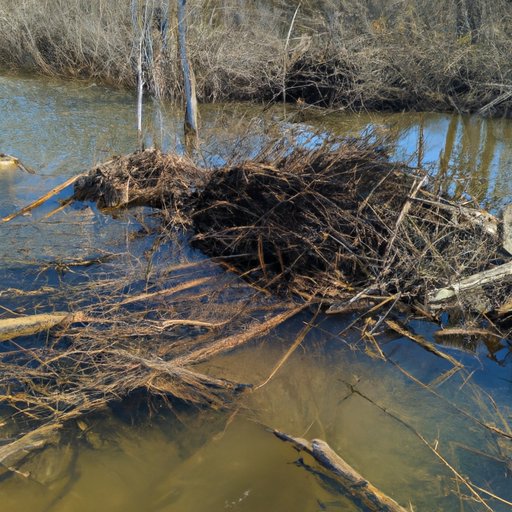I. Introduction
Beavers are known for their impressive engineering skills in building dams, which can create wetlands and provide various ecological benefits. But why do beavers build dams? In this article, we will explore the ecological and engineering marvels of beaver dam building, their importance in wetland conservation and restoration, and the potential impacts of climate change on beaver habitats and ecosystem health.
II. The Ecological Significance of Beaver Dams
Beaver dams create wetlands, which support biodiversity, water filtration, and flood regulation. Wetlands provide habitats for various animals, including amphibians, reptiles, birds, and mammals, and serve as breeding and nesting sites for many of them. Moreover, wetlands help filter out pollutants and sediments from water, reducing the risk of contamination downstream. They also absorb and store water during heavy rainfalls, reducing the risk of floods and erosion.
However, wetlands can also present challenges, such as mosquito breeding and water stagnation. Therefore, effective wetland management is essential to maintain their ecological benefits while managing their ecological challenges.

III. The Engineering Marvels of Beaver Dams
Beavers use a combination of materials, including tree branches, mud, and rocks, to build dams. By constructing dams, beavers can engineer the flow of water to create stable habitats for aquatic plants and animals. This engineering skill also differs from human engineering methods, and it often leads to more durable and effective structures. Moreover, beaver dams are typically built in response to the changing flow of water, which means that they are continuously adapting to environmental changes.
IV. Beaver Dams as an Adaptation Strategy in Response to Environmental Changes
Beavers have evolved to adapt to changes in their habitat, including water fluctuations, habitat destruction, and predation. By building dams, they create stable habitats for themselves and other species, mitigating the impact of environmental changes. Moreover, Beavers help to restore degraded watersheds, promote wildfire prevention, and provide a host of other ecological benefits to the ecosystems around them.
V. Social Behavior and Communication Patterns Among Beavers in Dam Building
Beavers are highly social animals, often living in large family groups. These family groups work together to build and maintain dams, and they communicate using a combination of scent marking and vocalizations. Female beavers also play a significant role in dam building and parenting, with a newborn kit’s survival depending considerably on the mother’s ability to build and maintain a suitable dam.
VI. The Importance of Beaver Dams in Wetland Conservation and Restoration
Beaver dams play a crucial role in wetland conservation and restoration. By creating wetlands, beavers help to reduce the risk of floods and erosion, filter pollutants from water, and provide habitats for various animal species. Wetlands also help to mitigate climate change by storing carbon in their soils, thereby also promoting carbon sequestration. Wetland conservation and restoration projects that integrate beaver dam building can help to achieve these vital environmental goals. Additionally, by better understanding the role of beaver dams in wetland conservation, we can create more effective conservation and management plans in the future.
VII. The Role of Beavers as a Keystone Species in Maintaining Ecosystem Health
“Keystone species” are species that play an essential role in maintaining ecosystem health. Beaver dams provide essential ecosystem services to other animals by creating habitats, maintaining water quality, and regulating water flows. Research has shown that beaver dams can also provide benefits to songbirds, otters, fish, and other animals. Beavers, therefore, play a key role in promoting ecosystem health.
VIII. The Potential Impact of Climate Change on Beaver Dam Building and Its Repercussions on the Ecosystem
The impacts of climate change on the world’s ecosystems and wildlife are vast, and beaver habitats and dam building are no exception. Changing temperatures and precipitation patterns can impact beaver habitat and their ability to build and maintain dams. This impact can affect wetland restoration and conservation efforts, as well as ecosystem services provided by beaver dams. Therefore, supporting beaver populations and promoting wetland conservation and restoration is crucial to ensure their continued ecological benefits in the face of climate change.
IX. Conclusion
Beavers play an essential role in creating and maintaining wetland ecosystems, reducing the risk of floods, and providing habitats for many species. By learning more about their ecological and engineering marvels, we can better support wetland conservation and restoration efforts, as well as beaver populations worldwide.
As the world faces significant climate change and its associated consequences, it’s more important than ever to support efforts that promote species’ health, conservation goals, habitat protection, and climate change mitigation. In supporting these issues, we can work toward a more sustainable and healthy future for humans and animals alike.
